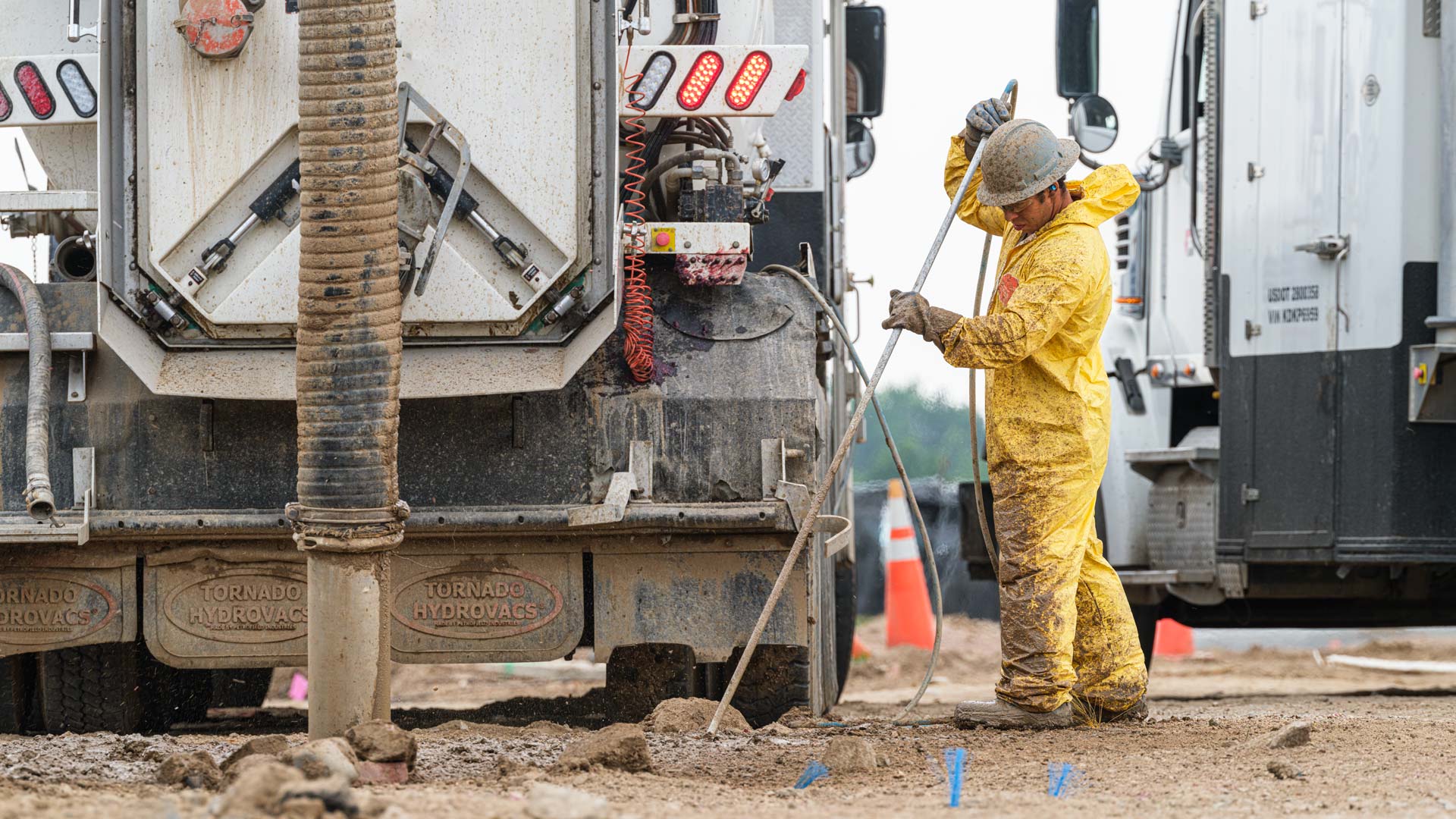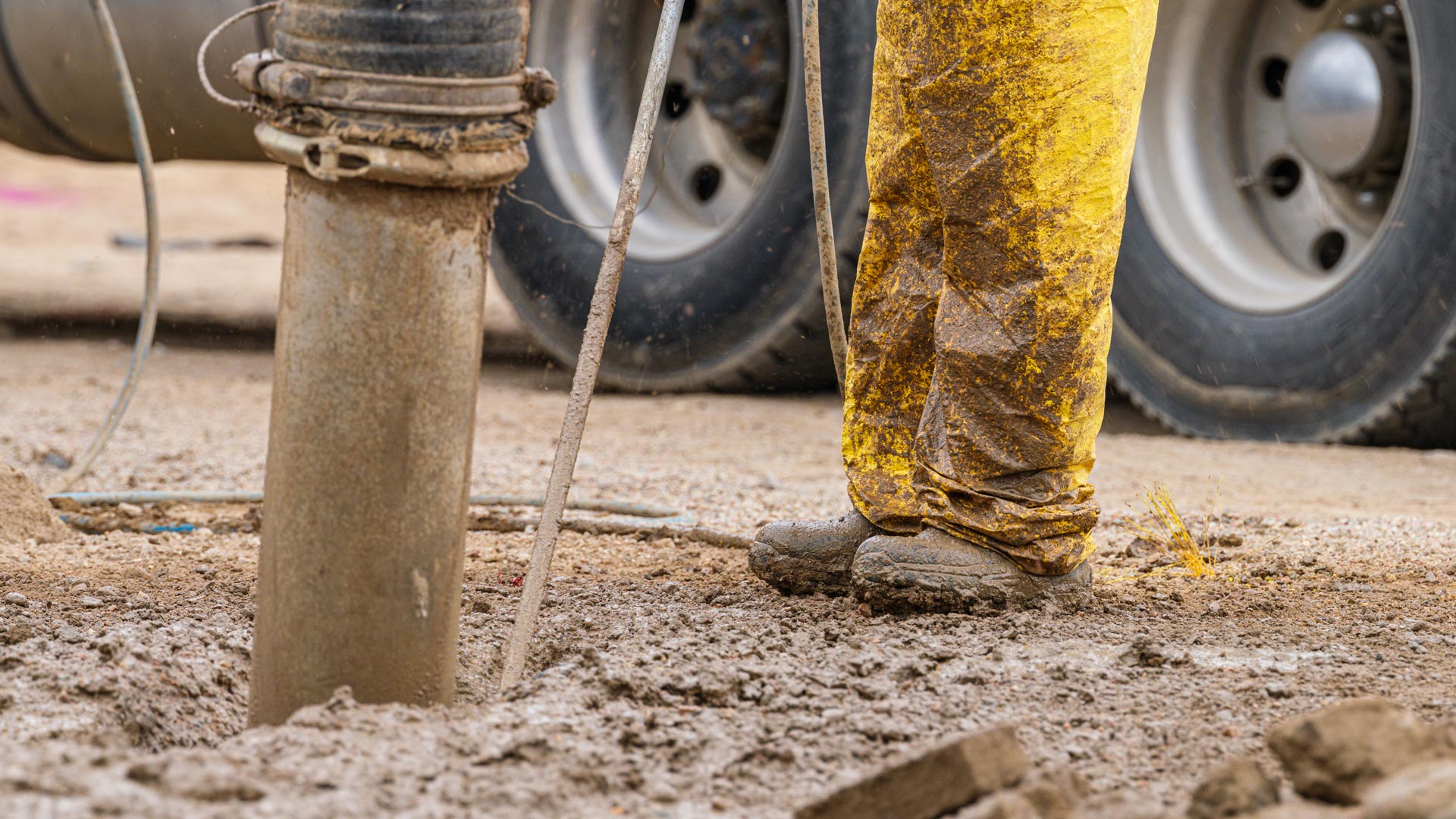7 Contaminated Soil Treatment Methods You Should Know
- Blog
The moment lab results show lead, benzene, or TPH above the action level, the entire scope of a project changes and treatment becomes the priority. Excavation plans are paused. Material stockpiles require containment. Site managers shift focus to risk mitigation, regulatory coordination, and load profiling. Contaminated soil treatment moves from a secondary consideration to a top priority. That shift affects compliance outcomes, disposal routing, and jobsite flow.
Matching Soil Conditions to the Right Treatment Approach
Every contaminated site behaves differently depending on the composition of the soil, the type of pollutant, and the regulatory thresholds that apply. Treatment decisions start with field analysis, lab confirmation, and a clear remediation objective tied to compliance goals.
Soil Treatment Method Overview
| Method | Target Contaminants | In Situ / Ex Situ | Typical Volume | Timeframe |
| Bioremediation | Petroleum, solvents | In Situ or Ex Situ | <1,000 CY | 4–16 weeks |
| Phytoremediation | Heavy metals, organics (low conc.) | In Situ | Variable | 6+ months |
| Chemical Oxidation (ISCO) | VOCs, SVOCs, BTEX | In Situ | 500–2,000 CY | 1–4 weeks |
| Thermal Desorption | VOCs, SVOCs | Ex Situ or Mobile | >200 CY | 3–10 days/site |
| Soil Washing | Metals, PAHs, hydrocarbons | Ex Situ | >100 CY | 1–2 weeks |
| Stabilization / Solidification | Metals, low-mobility organics | Ex Situ | 20–500 CY | 1–5 days |
| SVE / Air Sparging | VOCs (vadose or saturated zones) | In Situ | Field-dependent | 6–20 weeks |
Microbial Processing for Organic Contaminants
Bioremediation introduces engineered or native microbes into the soil to break down hydrocarbons and biodegradable solvents. This method performs best in moist, oxygen-rich soils with neutral pH and sufficient organic content. Nutrient injections or oxygenation systems can speed colony development. This form of contaminated soil treatment is typically selected for surface-level petroleum impacts where microbial action can occur under natural conditions.
Use case: Frequently applied at former fueling stations, oil spill zones, and small storage terminal cleanups.
Typical range: 4 to 16 weeks of onsite treatment depending on temperature and soil saturation.
Plant-Based Extraction and Stabilization
Phytoremediation relies on selected vegetation to extract, store, or immobilize pollutants in the root zone. Field crews apply this method in low-level contamination zones or when restoring post-industrial land over multi-year cycles. Some species extract metals into above-ground biomass for harvest, while others slow contaminant migration by stabilizing affected areas. Although slower than chemical or thermal methods, this type of contaminated soil treatment supports stabilization over time in non-critical zones.
Use case: Suitable for utility corridors, decommissioned rail yards, and non-urgent brownfield restorations.
Typical duration: 6 to 18 months for full effectiveness.
Chemical Oxidation of Hazardous Compounds
Oxidants such as hydrogen peroxide, potassium permanganate, or ozone can be injected into saturated or unsaturated soil zones. These compounds break down hazardous organics into inert salts, water, and carbon dioxide. Proper injection requires high-resolution modeling to avoid incomplete treatment zones or plume migration. Pressure control and plume rebound monitoring are critical during and after the process.
Use case: Common in active redevelopment zones where excavation is limited and BTEX concentrations are high.
Treatment duration: 1 to 4 weeks after permitting and access setup.
Thermal Treatment for Volatile Pollutants
Operators use fixed thermal units at licensed treatment sites and deploy mobile systems for field-based work near refineries or rail corridors. Contaminants are removed by
- heating the soil, and
- capturing vapor-phase emissions.
This method is often applied to VOCs and SVOCs, particularly in brownfield redevelopment or pipeline corridor work.
Use case: Used during emergency response near tank ruptures or as a final step after hydrocarbon excavation.
Volume range: 200+ cubic yards per treatment cycle, typically processed in under 10 days.
Soil Washing and Separation by Particle Size

Soil washing uses agitation, surfactants, and separation tanks to isolate contaminated fines from reusable aggregates. This method works well on soils with a clear grain-size gradient where fine particles bind most of the pollutants. Coarse material is often clean enough for reuse or disposal under general fill classifications. This mechanical form of contaminated soil treatment separates out the most highly loaded material for targeted disposal.
Use case: Frequently deployed in lead-contaminated urban infill sites and rail-adjacent developments.
Material range: 100–500 CY with throughput dictated by equipment setup.
Cementitious Stabilization and Immobilization
Binders like cement or fly ash trap hazardous particles in a hardened mass that resists leaching and infiltration. This method is typically used for
- metals
- low-mobility organics, and
- any waste that fails leachate testing but is otherwise stable.
The treated soil may be qualified for landfill or onsite backfill depending on jurisdiction.
Use case: Applied when excavation must proceed but offsite disposal is cost-prohibitive.
Timeframe: Stabilization is typically complete within 1 to 5 days.
Vapor-Phase Removal and Air-Driven Stripping
Soil vapor extraction is used to pull volatile organics out of unsaturated zones using a wellfield and negative pressure system. In saturated zones, air sparging pushes compressed air into the groundwater table to lift volatile compounds into the unsaturated layer. Both systems require carbon filtration, vapor monitoring, and post-closure sampling to confirm effective removal.
Use case: Used under slab-on-grade buildings, near well pads, or in source zones with vapor risk.
Operation duration: 6 to 20 weeks depending on contaminant volatility and site geometry.
Evaluation and Planning Requirements Before Remediation
Treatment success begins with data. Contaminant type, depth, and transport behavior must all be captured through sampling protocols that meet agency criteria.
Field crews prepare these profiles using GPS-tagged sampling logs and laboratory chain-of-custody procedures. BTEX compounds, VOCs, TPH fractions, and metals are typically analyzed with results compared to project-specific action levels or published state tables. Waste classification follows, determining whether material is eligible for reuse, requires stabilization, or must be treated as hazardous. Before any form of contaminated soil treatment can proceed, lab data must support the selected remediation path.
Excavation Constraints and Deployment Logistics
In-place methods may reduce hauling costs but extend timelines. Ex-situ techniques give more control but often raise the risk of disruption, runoff, or staging complexity.
Some jobs require access to sensitive or difficult terrain. Sites near levees, wetlands, or underground utilities often rely on hydro-excavation to minimize damage.
Field-Level Execution for Regulated Material Handling
Onsite execution requires more than a method. Material must be tracked from removal to endpoint with traceable manifests and site-specific procedures.
Crews may use
- containment berms,
- sealed roll-offs, or
- lined staging pits
depending on the waste profile. Hydrovac rigs are often used to surgically expose and remove soil near infrastructure, with spoil stored separately based on contamination level. Projects near waterways, wetlands, or protected zones require hydro excavating methods adapted for environmentally sensitive areas, including containment protocols and minimal ground disturbance techniques.
Tailored Support for Complex Site Conditions

Fuzion deploys excavation crews, hydrovac units, and regulated material workflows tailored to active remediation zones. For example, in projects where unknown strata are encountered, hydrovac systems allow crews to adjust removal based on strata hardness, water saturation, and access constraints. This adaptability is especially critical when sites border waterways, rail lines, or critical infrastructure.
Fuzion supports contaminated soil treatment by pairing low-ground-pressure rigs with adjustable excavation techniques that respond to soil structure and composition in real time. The company integrates removal, transfer, and documentation into a defensible, inspection-ready workflow from day one.
Maintain Compliance with Fuzion’s Soil Remediation Support
Fuzion Field Services delivers excavation and compliance-focused remediation support for projects involving regulated soils. Our crews are trained in EPA-aligned handling procedures and equipped with field systems designed to document every yard of material removed. Contact us today for more information.